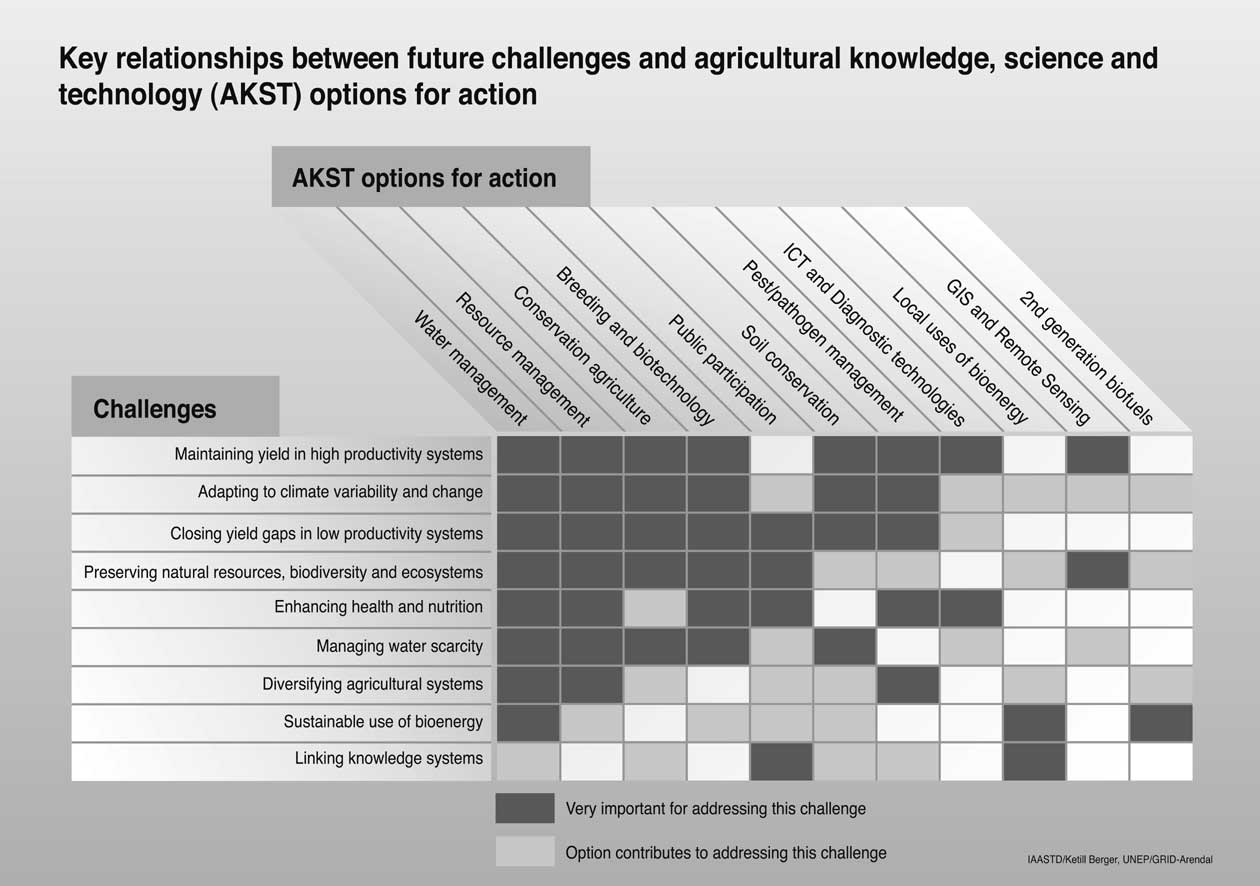| Previous | Return to table of contents | Search Reports | Next |
| « Back to weltagrarbericht.de | ||
380 | IAASTD Global Report
Table 6-1. Key Relationships between Future Challenges and Agricultural Knowledge, Science and Tecnology (AKST) Options for Action

ties for simple, one-factor improvements have been widely exploited already. It will be more promising to develop innovations that address several factors simultaneously (as in the above examples) and which will therefore be more context and site specific and more information-intensive. This will require a change of emphasis in research for farming system optimization. Research needs to develop decision support tools that assist extension workers and farmers in optimizing specific farm enterprises. Such tools already exist for farm economics, site-specific nutrient management, crop protection and land use planning. Integrative approaches such as RISE (Response Inducing Sustainability Evaluation) (Häni et al., 2003), which combine economic, social and ecological aspects, aim at assessing and improving sustainability at the farm level. Two-thirds of the rural poor make their living in less favored areas (IFAD, 2001). They will continue to depend on agriculture. Returns on investment in AKST may be limited in these areas due to their inherent disadvantages (remoteness, low-fertility soils, climatic risks) and the highly diverse systems (Maxwell et al., 2001). On the other hand, the impact of innovations on poverty, equity and environmental health may be substantial. Recent examples show that improvements are possible in less favored areas, both for simple technological changes (e.g., more productive crop varieties) as well as for more complex innovations (e.g., the mucuna cover crop system or the slash-and-mulch system in Honduras). |
|
Sustainable alternatives to shifting cultivation. Shifting cultivation was the most widespread form of land use in the tropics and subtropics, but over the past decades, a transition occurred to managed fallows or continuous cropping with crop rotation in densely populated areas. Alternatives to slash-and-burn clearing have been developed, which better conserve the organic matter accumulated during the fallow periods. Managed fallows and sound rotations may enhance soil fertility regeneration and even produce additional benefits. This allows for extending cropping periods and reducing fallow periods without compromising sustainability. The resulting "offshoots" of shifting cultivation raise a number of issues to be addressed by AKST. Firstly, it will be important to understand the transition process, its drivers and the newly emerging problems in order to assist farmers. Secondly, for targeted up-scaling of local experiences, it will be crucial to examine the potentials and limitations of different offshoots of shifting cultivation (Franzel et al., 2004). |
| Previous | Return to table of contents | Search Reports | Next |
| « Back to weltagrarbericht.de | ||